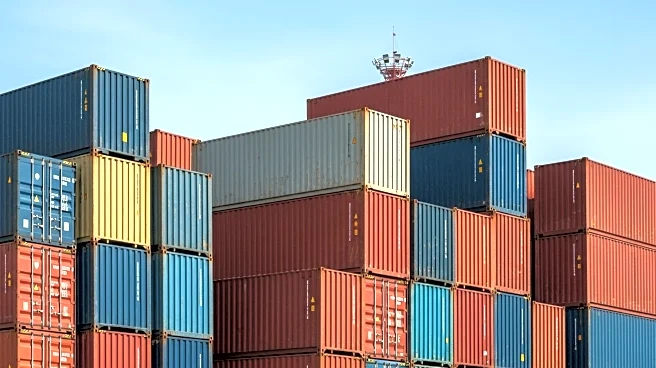What's Happening?
The United Nations Trade and Development (UNCTAD) has identified the Red Sea crisis as a significant factor affecting spot container freight rates in 2024. The crisis led to rerouting via the Cape of Good Hope, which extended voyage times, reduced effective capacity, and increased operating costs. This situation drove spot and charter rates to near COVID-19 peaks by mid-2024 before moderating by the end of the year. The Shanghai Containerized Freight Index, a key benchmark for spot rates, averaged 2,496 points in 2024, marking a 149% increase from the 2023 average. The index peaked at 3,600 points in mid-2024, its highest level since the global logistics crunch of 2021-2022. The volatility continued into 2025 amidst tariff announcements by the US and mounting geopolitical risks.
Why It's Important?
The increase in spot container freight rates has significant implications for global trade, particularly affecting trade routes between North America and Asia, as well as South-South trade between Asia and developing economies. The elevated rates reflect broader economic activity and geopolitical tensions, which can impact shipping costs and trade dynamics. The growth in global cargo volumes and container shipping capacity, despite the disruptions, indicates a robust demand for shipping services. However, the high freight rates could lead to increased costs for businesses and consumers, affecting pricing and supply chain strategies.
What's Next?
UNCTAD projects uncertainty in container demand for 2025 due to growing geopolitical tensions and trade policy shifts. The container fleet capacity is expected to continue growing as new ships ordered during the post-COVID-19 period are delivered. Port congestion, driven by infrastructure bottlenecks, operational inefficiencies, and increased cargo volumes, is likely to persist, exerting upward pressure on freight rates. Stakeholders in the shipping industry may need to adapt to these conditions by optimizing operations and exploring alternative routes.
Beyond the Headlines
The Red Sea crisis highlights the vulnerability of global shipping routes to geopolitical events. The rerouting and increased voyage times underscore the need for resilient logistics strategies and infrastructure improvements. The situation also raises questions about the sustainability of current shipping practices and the potential for innovation in maritime transport to mitigate such disruptions.












